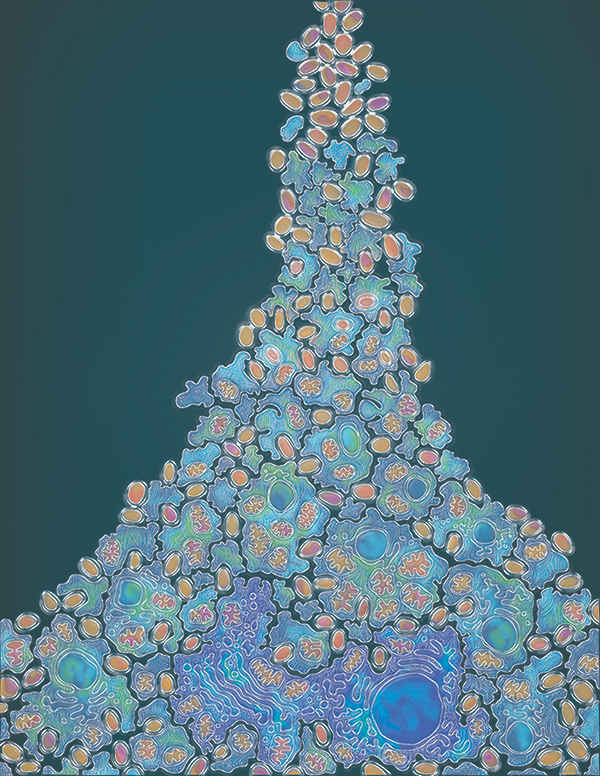Researchers redefine scenario for the origin of complex life
Publication date: Friday 05 April 2019
How did complex life on Earth emerge about two billion years ago? An international team of researchers from Sweden, United States, Australia and The Netherlands, now provides new insights. In a study, published in Nature Microbiology this week, the team presents a new model about how the first complex cell types that comprise plants, fungi, but also animals and humans may have evolved. In this model, they describe how complex cells originated from a symbiosis between simpler cell types, i.e an archaeal host cell and a bacterial symbiont that interacted metabolically.
“To sustain growth, we propose that the archaeal host cell lived in close association with a bacterial partner organism that accepted electrons from the archaeon”, suggests Anja Spang, lead author of the article and scientist at NIOZ and Uppsala University “Previous models have also suggested a transfer of electrons between the archaeal host and the bacterial symbiont. But based on our analyses of the closest archaeal relatives of eukaryotes, we propose a model in which the flow of these electrons is reversed”.
For further details, please check out the listed links to the press release of the article by Wageningen University, the article itself at Nature Microbiology and a Behind the paper blog post.
